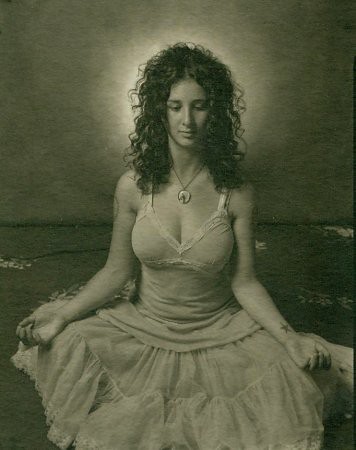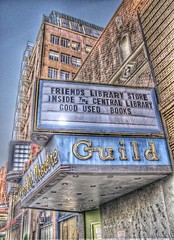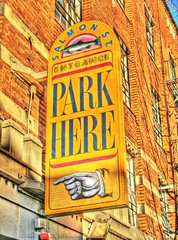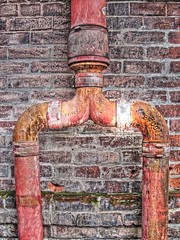An exploration of random photographic art related ideas, commentary, and useful information
Saturday, June 28, 2008
Friday, June 27, 2008
How I did this... [2]
Portland has a few good graffiti artists. I really enjoy seeing their work, but many times I need to rush to get photos of a scene before someone paints over it. The "authorities" tend to be very confused about what is and what is not "gang" related. So, they try to paint over everything and anything looking like streetart.
However, there is a neat place up on Belmont where the graff stays up for long periods of time. The artist(s) are wonderfully creative! So when my wife told me that some new art went up, I was excited to see what they'd come up with. If the web address on the art is any indication, the artist(s) hails from somewhere north of the US border. I like Canada. I can see that a wee-trip north to photograph their own streetart could yeild some good images.
My wife and I pulled the Prius up to the curb on the opposite side of the street. The parking space in front of the art was filled with some huge gas guzzling blob. I needed the widest angle lens I had. That wasn't too difficult as I have a 10-22mm f/3.5-4.5 EF-S Canon lens that mounts perfectly to my new 40D.
The scene had a very wide dynamic range. Shadow details were easily 20 stops lower than the exceedingly bright back-lit thin clouds. This led me to the idea of realizing the subject as a high dynamic range tone-map. I set the 40D's automatic exposure bracketing function for +/-2EV and made sure the shutter would trip multiple times at high speed. The camera was hand held and I wanted as little motion between exposures as possible.
Once captured, I imported three images (one each +/-/0 EV) into an Open Source application called Qtpfsgui. I checked the box that forced an alignment, just in case the three images needed it. The first step yielded a high dynamic range tiff format file. These files tend to be flat looking and really aren't very interesting.
To make the photo "sing", I selected Qtpfsgui's tone map funtion and used the Fattal filter to re-write the tones they way my mind's eye "saw" them when I first took the three photo stack. There are modifiable parameters in the tone mapping software that allow a user to stretch the image re-mapping in several dimensions. Since I have been working with the application for some time it was easy for me to select the parameter values that closely matched my desired output.
After saving the tone mapped image as a jpg, I opened another Open Source application called the Gimp. The Gimp is a great Photoshop-like application that you can use to edit photos. In this case, I used the Gimp to snug up the upper and lower values and to bring down the "shadow" (darker) tones.

I love the way I can go from image capture to finished product in such little time. Add to this the use of Open Source (aka: free, as in no cost) image manipulation software and I'm thrilled with how my image processing has been streamlined.
However, there is a neat place up on Belmont where the graff stays up for long periods of time. The artist(s) are wonderfully creative! So when my wife told me that some new art went up, I was excited to see what they'd come up with. If the web address on the art is any indication, the artist(s) hails from somewhere north of the US border. I like Canada. I can see that a wee-trip north to photograph their own streetart could yeild some good images.
My wife and I pulled the Prius up to the curb on the opposite side of the street. The parking space in front of the art was filled with some huge gas guzzling blob. I needed the widest angle lens I had. That wasn't too difficult as I have a 10-22mm f/3.5-4.5 EF-S Canon lens that mounts perfectly to my new 40D.
The scene had a very wide dynamic range. Shadow details were easily 20 stops lower than the exceedingly bright back-lit thin clouds. This led me to the idea of realizing the subject as a high dynamic range tone-map. I set the 40D's automatic exposure bracketing function for +/-2EV and made sure the shutter would trip multiple times at high speed. The camera was hand held and I wanted as little motion between exposures as possible.
Once captured, I imported three images (one each +/-/0 EV) into an Open Source application called Qtpfsgui. I checked the box that forced an alignment, just in case the three images needed it. The first step yielded a high dynamic range tiff format file. These files tend to be flat looking and really aren't very interesting.
To make the photo "sing", I selected Qtpfsgui's tone map funtion and used the Fattal filter to re-write the tones they way my mind's eye "saw" them when I first took the three photo stack. There are modifiable parameters in the tone mapping software that allow a user to stretch the image re-mapping in several dimensions. Since I have been working with the application for some time it was easy for me to select the parameter values that closely matched my desired output.
After saving the tone mapped image as a jpg, I opened another Open Source application called the Gimp. The Gimp is a great Photoshop-like application that you can use to edit photos. In this case, I used the Gimp to snug up the upper and lower values and to bring down the "shadow" (darker) tones.

I love the way I can go from image capture to finished product in such little time. Add to this the use of Open Source (aka: free, as in no cost) image manipulation software and I'm thrilled with how my image processing has been streamlined.
Thursday, June 26, 2008
How I did this... [1]
I use Flickr as an on-line gallery space for many of my images. The site is well organized, easy to upload to, and allows the ability to receive feedback and comments from community participants. There are currently over seven million registered Flickr users.
Compare this with the number of viewers a decent photographer might get during a one month gallery showing and you can begin to understand why I like Flickr. It's a great way to have ones work viewed and reviewed by potentially hundreds of thousands of people.
In this series I would like to take five of my most viewed images posted on Flickr and share a few thoughts and comments. I would like to share how I made the image, what it meant to me at the time, and what the image has become.

The first image I would like to talk about is rather special to me. Here's why.
My wife and I had recently moved into Portland after spending far too long living in an outlying suburb. Once in town I realized there was a large community of photographers who met on a regular basis. Some groups met to critique each others work. Others met just to enjoy a beer and conversation.
I met Ray Bidegain in one of the small gatherings that take place monthly on the east side of town. Ray, as you may already be aware, is a very fine platinum print artist. His work includes figure studies (for which he is rightfully well known) and landscape images. After seeing his work, I was hooked on the idea of making my own alternative prints. Ray's work was selling well at the time and I thought perhaps I could make and sell a few images too.
Ray was renting studio space up in the north west part of town and was looking for other photographers to share the rent. It was a nice space. A little small, but it had large west facing windows. The space also had a large hand painted backdrop. I signed up with Ray and started paying him rent to sublet the space.
I posted a call for models in the local Craigslist Artists group. This gal was the first to reply.
We set a time and date and I started to gather my materials for the shoot. At the time I was working with an 8x10 Deardorff front swing camera with a 300mm f/4.5 Schneider Xenar in number 5 Compound shutter. I also worked in 4x5 using a nice Arca Swiss Discovery, which Ray has since purchased from me. The 8x10 film was TMax400. The 4x5 film was Ilford FP4+.
The image here was produced all in camera. The Arca Swiss 4x5 had a 150mm Schneider Symmar Convertable f/5.6 in #1 Prontor shutter mounted to the fore. The model was asked to meditate, which she obviously knew how to do. The halo was such a huge bonus that I was thrilled by the very first print I ever made of the model. I used a large softbox high off camera left and placed a 7 inch coned monolight directly behind the models head pointed at the backdrop. The setup was as simple as that.
I have since sold many prints. My Flickr page has received over 1,300 views to date. People have responded positively in all respects.
This image is a 4x5 inch contact Palladium print that I made. It is window mounted to 11x14 inches, and, I have to say, it looks great.
So many things came together all at the same time. It's one of those experiences that I feel I have been working a lifetime to participate in. I feel lucky.
Compare this with the number of viewers a decent photographer might get during a one month gallery showing and you can begin to understand why I like Flickr. It's a great way to have ones work viewed and reviewed by potentially hundreds of thousands of people.
In this series I would like to take five of my most viewed images posted on Flickr and share a few thoughts and comments. I would like to share how I made the image, what it meant to me at the time, and what the image has become.

The first image I would like to talk about is rather special to me. Here's why.
My wife and I had recently moved into Portland after spending far too long living in an outlying suburb. Once in town I realized there was a large community of photographers who met on a regular basis. Some groups met to critique each others work. Others met just to enjoy a beer and conversation.
I met Ray Bidegain in one of the small gatherings that take place monthly on the east side of town. Ray, as you may already be aware, is a very fine platinum print artist. His work includes figure studies (for which he is rightfully well known) and landscape images. After seeing his work, I was hooked on the idea of making my own alternative prints. Ray's work was selling well at the time and I thought perhaps I could make and sell a few images too.
Ray was renting studio space up in the north west part of town and was looking for other photographers to share the rent. It was a nice space. A little small, but it had large west facing windows. The space also had a large hand painted backdrop. I signed up with Ray and started paying him rent to sublet the space.
I posted a call for models in the local Craigslist Artists group. This gal was the first to reply.
We set a time and date and I started to gather my materials for the shoot. At the time I was working with an 8x10 Deardorff front swing camera with a 300mm f/4.5 Schneider Xenar in number 5 Compound shutter. I also worked in 4x5 using a nice Arca Swiss Discovery, which Ray has since purchased from me. The 8x10 film was TMax400. The 4x5 film was Ilford FP4+.
The image here was produced all in camera. The Arca Swiss 4x5 had a 150mm Schneider Symmar Convertable f/5.6 in #1 Prontor shutter mounted to the fore. The model was asked to meditate, which she obviously knew how to do. The halo was such a huge bonus that I was thrilled by the very first print I ever made of the model. I used a large softbox high off camera left and placed a 7 inch coned monolight directly behind the models head pointed at the backdrop. The setup was as simple as that.
I have since sold many prints. My Flickr page has received over 1,300 views to date. People have responded positively in all respects.
This image is a 4x5 inch contact Palladium print that I made. It is window mounted to 11x14 inches, and, I have to say, it looks great.
So many things came together all at the same time. It's one of those experiences that I feel I have been working a lifetime to participate in. I feel lucky.
Wednesday, June 25, 2008
As Mel Brooks once said...
"A funny thing happened on the way to the Coliseum."
There is a group of photographers in Portland who gather on a regular basis. We critique each others work. Sometimes I don't get home until well after 10pm.
I attend several of these kinds of groups. One is devoted to casual conversations over beer and food. Another is quite serious about tools and technique. Yet another consists of artists, teachers, and professionals.

The groups have gotten to know me. When I moved into Portland from the 'burbs I was still in my large format traditional silver print phase. People saw my work and commented positively about many of the images. Later, I moved into making hand coated Palladium prints from large to ultra large format negatives. About a year after I started printing Palladium, and after several very successful gallery shows, I jumped headlong into a war over photographic fundamentalism. Like all religious battles, things got messy.
Working with new tools and modeling my processes after traditional techniques I started to create images that thrilled me. I felt free to explore just about any photographic expression that came to mind. One evening I decided to share some of the work that I had processed just the week before.
It was late. People were tired. Some folks had left already.

When it was my turn, I carefully arranged my photos for people to review.
I quickly sensed that some people were challenged by what I was sharing. As people started to comment and critique the images, it came as no surprise that they had a wide range of thoughts on the topic of photography. In short, my work was nothing like they had "expected" a "real" photograph to be.
I heard comments like "... these are not photographs...", "... I don't know what these are...", "... your images are flat... they lack depth...", "... do you realize that you are threatening illustrators by making it too easy?... they will loose their jobs over this!..."
To balance the whole charade were two photographers who came up to me afterward and said "... this is really great!", "You might be onto something... much like the Impressionists were onto something when they were tossed out of the Salons in Paris..." The last comment may be on the verge of overkill, still, my ego loved to hear it.

I learned several things from the experience. I had a chance to witness the differences in how people "see" photography. It was at first surprising to watch people make assumptions about what is and what is not photography. There seems to a very clear set of "rules" about what a photograph is.
Thinking about this a bit, I have come to the realization that two things were at play. First, people on the inside of the business of making photographs have a very different view of the art than, say, the typical lay viewers, the Great Unwashed Masses. Where I had nothing but praise from the general public for me new work, the photographic establishment was, by and large, reacting quite negatively.

Second, I once again had the opportunity to feel the gulf between what I created, my intentions and hope for the work, and the way people actually respond. Depending on the viewer, the gap between "me" and "them", and the way people respond can be very large.
I am reminded of the unspoken responsibilities of an artist. While there are many dimensions and approaches to expressing art, I can see where it is helpful to provide context. There needs to be some way of connecting with viewers. In general, it seems to me that if an artist assumes a particular context, they may be missing an opportunity to connect with viewers. For on that night of late evening photo critique I had failed to hook my viewers in a way that was meaningful, accessible, or knowable to them.
There is a group of photographers in Portland who gather on a regular basis. We critique each others work. Sometimes I don't get home until well after 10pm.
I attend several of these kinds of groups. One is devoted to casual conversations over beer and food. Another is quite serious about tools and technique. Yet another consists of artists, teachers, and professionals.

The groups have gotten to know me. When I moved into Portland from the 'burbs I was still in my large format traditional silver print phase. People saw my work and commented positively about many of the images. Later, I moved into making hand coated Palladium prints from large to ultra large format negatives. About a year after I started printing Palladium, and after several very successful gallery shows, I jumped headlong into a war over photographic fundamentalism. Like all religious battles, things got messy.
Working with new tools and modeling my processes after traditional techniques I started to create images that thrilled me. I felt free to explore just about any photographic expression that came to mind. One evening I decided to share some of the work that I had processed just the week before.
It was late. People were tired. Some folks had left already.

When it was my turn, I carefully arranged my photos for people to review.
I quickly sensed that some people were challenged by what I was sharing. As people started to comment and critique the images, it came as no surprise that they had a wide range of thoughts on the topic of photography. In short, my work was nothing like they had "expected" a "real" photograph to be.
I heard comments like "... these are not photographs...", "... I don't know what these are...", "... your images are flat... they lack depth...", "... do you realize that you are threatening illustrators by making it too easy?... they will loose their jobs over this!..."
To balance the whole charade were two photographers who came up to me afterward and said "... this is really great!", "You might be onto something... much like the Impressionists were onto something when they were tossed out of the Salons in Paris..." The last comment may be on the verge of overkill, still, my ego loved to hear it.

I learned several things from the experience. I had a chance to witness the differences in how people "see" photography. It was at first surprising to watch people make assumptions about what is and what is not photography. There seems to a very clear set of "rules" about what a photograph is.
Thinking about this a bit, I have come to the realization that two things were at play. First, people on the inside of the business of making photographs have a very different view of the art than, say, the typical lay viewers, the Great Unwashed Masses. Where I had nothing but praise from the general public for me new work, the photographic establishment was, by and large, reacting quite negatively.

Second, I once again had the opportunity to feel the gulf between what I created, my intentions and hope for the work, and the way people actually respond. Depending on the viewer, the gap between "me" and "them", and the way people respond can be very large.
I am reminded of the unspoken responsibilities of an artist. While there are many dimensions and approaches to expressing art, I can see where it is helpful to provide context. There needs to be some way of connecting with viewers. In general, it seems to me that if an artist assumes a particular context, they may be missing an opportunity to connect with viewers. For on that night of late evening photo critique I had failed to hook my viewers in a way that was meaningful, accessible, or knowable to them.
Thursday, June 19, 2008
System Resolution - from Luminous Landscape
I have spent a lot of time with friends and alone testing resolution of MF and LF lenses as part of real world camera systems. One of the big limitations for putting anything to film has been the resolution limits of the film itself and diffraction at smaller apertures.
In their own way, if I'm reading this correctly, nothing has changed when it comes to digital photography. Check out this article and see what you think.
The optical sensor in a CCD or CMOS array becomes the limiting "airy disk" and optical diffraction limits how far you can stop down. I'm happy to see that the laws of physics remain in full effect.
In their own way, if I'm reading this correctly, nothing has changed when it comes to digital photography. Check out this article and see what you think.
The optical sensor in a CCD or CMOS array becomes the limiting "airy disk" and optical diffraction limits how far you can stop down. I'm happy to see that the laws of physics remain in full effect.
Wednesday, June 11, 2008
Monday, June 09, 2008
Tuesday, June 03, 2008
Subscribe to:
Posts (Atom)